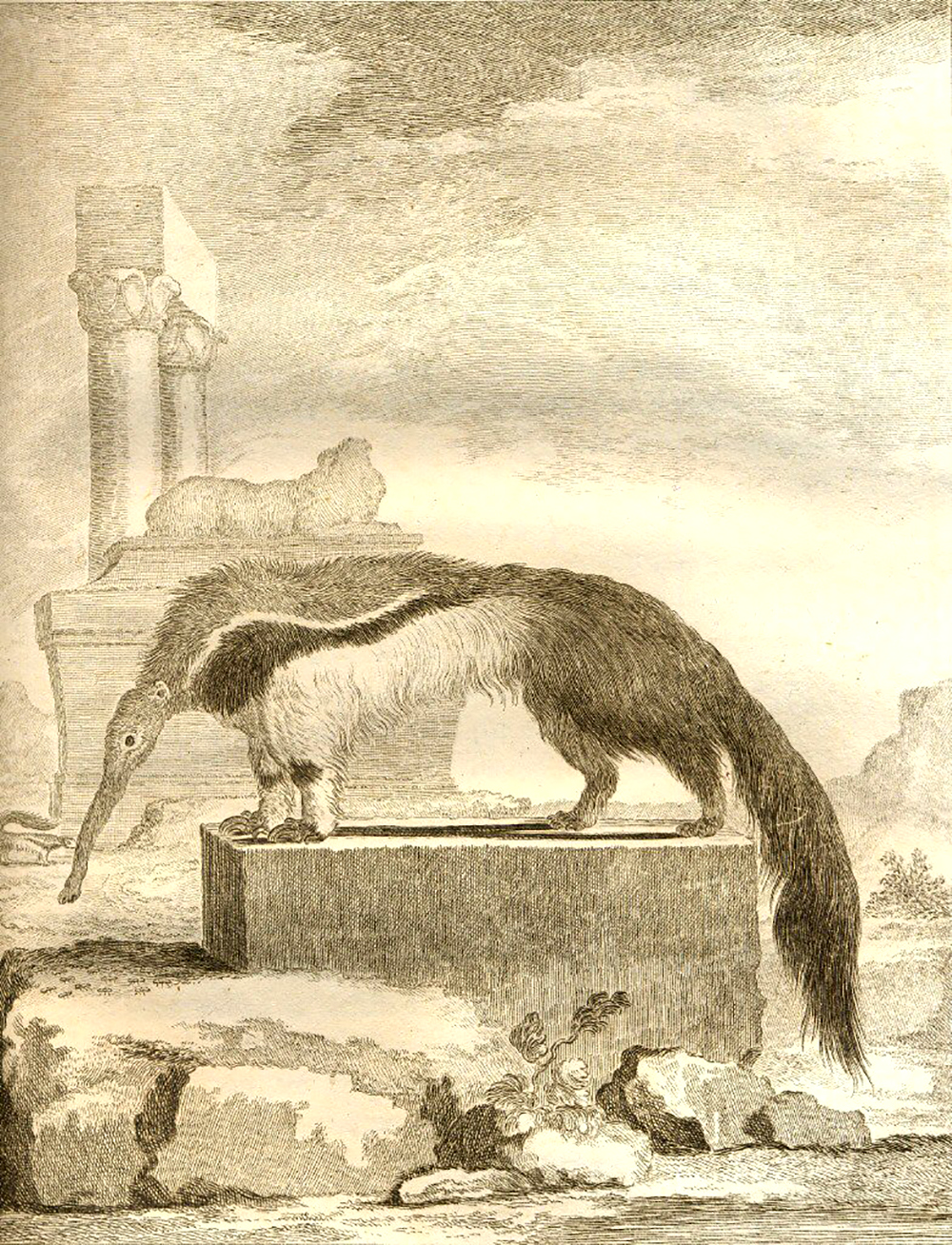The anteater served as a point of contention within two related debates concerning the nature of the New World and the relative value of observations made in the museum or in the field. The first of these debates, initiated by the French naturalist Buffon, claimed that the New World was colder and more humid than the Old and its fauna correspondingly smaller and weaker than their Old World counterparts. This contention aroused the indignation of American Creoles and Spaniards, who questioned their scientific validity. The anteater featured prominently in this transatlantic tussle, appearing in the writings of both America’s detractors and its defenders. The ‘dispute of the New World’ fed into a deeper discussion of the credibility of different naturalists and the epistemological value of evidence gathered in different places. Should one put more trust in the museum-based scholar, or the travelling naturalist? The anteater offered a prime example of these contrasting approaches, receiving different appraisals from sedentary and field-based scholars.
BUFFON’S ANTEATER
‘Le Tamanoir’, from G.L. Leclerc de Buffon, L’Histoire Naturelle, vol. 11, plate 29 (Paris: Imprimerie Royale, 1764).
Helen Cowie
Further reading
- Bleichmar, D. (2017) Visual Voyages: Images of Latin American Nature from Columbus to Darwin (New Haven, CT: Yale University Press/Huntington Library).
- Cowie, H. (2011) Conquering Nature in Spain and its Empire, 1750–1850 (Manchester: Manchester University Press).
- De Vos, P. (2009) ‘The rare, the singular and the extraordinary: natural history and the collection of curiosities in the Spanish Empire’, in Science in the Spanish and Portuguese Empires, edited by D. Bleichmar, P. De Vos, K. Huffine, and Sheehan, 271–89 (Stanford, CA: Stanford University Press).
- Dillon, J.T. (1780) Travels through Spain, with a View to Illustrate the Natural History and Physical Geography of that Kingdom (London: Robinson).
- Gerbi, A. (1973) The Dispute of the New World (Pittsburgh, PA/London: University of Pittsburgh Press).
- Gómez-Centurión Jiménez, C. (2011) Alhajas para Soberanos: los animales reales en el siglo XVIII: de las leoneras a las mascotas de cámara (Madrid: Junta de Castilla y León).
- Urríes y de la Colina, J.J. (2011) ‘Un Goya exótico, “La osa hormiguera de Su Majestad”’, Goya: Revista de arte, vol. 336, 242–53.
- Outram, D. (1995) ‘New spaces in natural history’, in Cultures of Natural History, edited by N. Jardine, J. Secord, and E. Spary, 249–65 (Cambridge: Cambridge University Press).
- Mazo Pérez, A.V. (2006) ‘El oso hormiguero de Su Majestad’, Asclepio, 58 (1): 281–94.
- Pimentel, J. (2017) The Rhinoceros and the Megatherium: An Essay in Natural History (Cambridge, MA: Harvard University Press).





